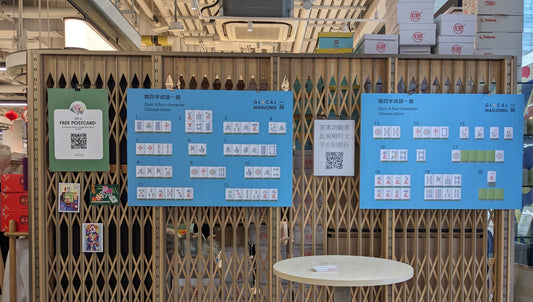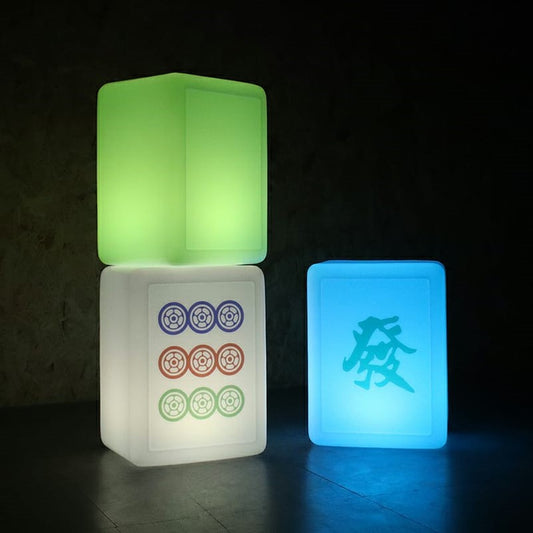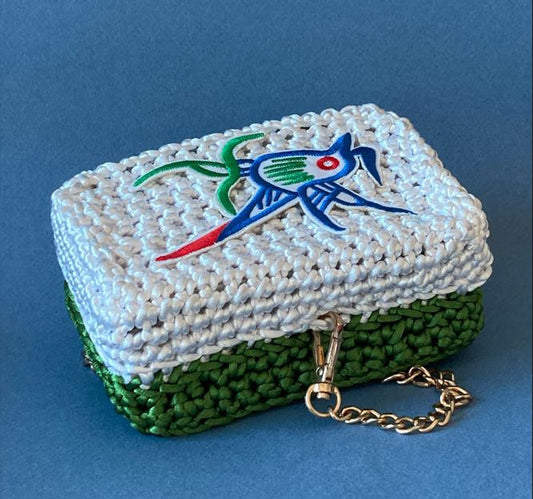Mahjong X Cake - Want a mahjong cake (2022)?
We have done a few episodes crossing over mahjong with different forms of design, like architecture, furniture and cheongsam, this time let’s do something more light-hearted. We are going to talk about mahjong cake.
If you just google image search for mahjong cake, you will be amazed how popular mahjong is as a theme for cakes. This reflects how much mahjong is liked by people.
Cake being sweet and heart-filling, is closely associated with happiness and joyful moments to be shared. It is extended to cover other good things as found in idioms like a piece of cake or a cakewalk means a light and easy task, a slice of cake means sharing profit or reward, a hot cake stands for something selling well and the icing on the cake for something that makes a good situation even better. ||
A delicious cake treats the guests’ taste buds and an interestingly garnished cake provides feasts to the eyes and becomes a centrepiece for an event, which makes a great prop for photos. A specially designed cake easily brings out the theme of an event and makes the gathering very festive and memorable. The effort put into a bespoke cake also tells the receiver how much he or she is cared for and loved. And often, the blowing of candles and cutting of a cake could be the climax of an event making it ceremonial. That is why people say, a party without cake is just a meeting.||
To make or select a cake, the types of cake and fillings are important early decisions and they also relate very much to individual tastes and preferences. As I am not an expert in this area, I better leave these to other online resources as there are so many recommendations, recipes and tutorials shared by other bakers and cake experts. I will focus more on the design and look of the cake here.
Whether one makes his own cake or order one, the time and budget available are inevitably important considerations. Then comes the size of a cake which depends very much on the number of guests and whether the cake is shared just as part of the ritual or is really served as a dessert. There are templates or guides which relate the size of cakes to the number of servings. Special thematic cakes are often made for an important event and are normally larger in the size.||
In many ways, designing and making a cake is highly creative and shares many similarities with designing a building or making a sculpture. It involves good skills of art and craft. All art skills like sculpting, colour mixing and matching, paintings with brushes or palette knives, and calligraphy are applicable while special skills for cakes like piping, embossing, dripping and sugarcraft are highly artistic and ornamental, if not magical.
For a cake, the form and structure are as important as a building. Like a high rise, a tall cake built up of tiers and columns makes it more iconic though it is also much more challenging to construct a tall cake than a flatter one. Like doing real sculpture, to do anything more sculptural, a strong body is important. Also, the thicker and more solid the filling, the finer and better details one can create. A very tender and open crumbed cake won’t do well with carving, and fillings that cannot be firmed up under refrigeration are not good choices for sculpted cakes. ||
The theme of mahjong is most often used for birthday cakes and certain tiles like the Chinese words of 發 which brings the blessing of having fortune or a big winning hand of grand three chiefs 大三元, grand four happiness大四喜and thirteen terminal tiles 十三么are popular designs. Blank mahjong tiles also provide a good canvas for people to put names and blessing words on.
For mahjong cakes, it could be conventional cakes decorated with mahjong tiles together with other items like chips, dice and coins or tailor-designed ones. Mahjong tiles are often made out of chocolate embossed with graphics from special moulds, topped with edible prints or hand-drawn with mahjong characters and icons. ||
Often square cakes are turned into a mahjong table to hold the toppers or rectangular ones to represent giant mahjong tiles. The icing can range from harder fondant that provides a fine smooth surface to receive other fine piping to buttercream or whipped cream.
Despite cakes coming in a greater variety of colour themes, mahjong tiles are conventionally conceived as a combination of white and green. White comes naturally as flour, egg white, whipped cream, sugar icing and marshmallow or even in the East as rice powder and tofu, while green, apart from food colouring, comes easily from grinding all forms of leaves like veggie, pandan or green tea. It can also come from nuts like pistachio and fruits like avocado, kiwi or grape.
As I am coming from Hong Kong, I want to provide my audience with a list of places where they can order such a cake. I start from my initial research down below in my description and if you are a baker or a bakery shop in Hong Kong and want me to cover yours, please write to me as comments or send an email to our shop, I will try to include your information in my description below. I may even do another episode on the subject if I collect sufficient interesting content. ||
The History of Cakes
For those of us who share an affinity for sweets, cake probably ‘takes the cake’ as our favorite dessert ever. It’s the one treat most commonly associated with momentous celebrations, and it can even manage to evoke nostalgia. Not to mention, a flavor profile exists for practically every taste, even those who don’t like chocolate (although we have to respectfully agree to disagree here). But, what you may not know is that cake has a history that is as rich and detailed as those exquisite cakes we see on TV and in our own homes. Let’s enhance our cake trivia and indulge in some history of cakes.
The word cake is of Viking origin, derived from the Norse word “kaka.” The first cakes ever made are actually quite different from the ones we eat today. Interestingly, the ancient Egyptians were the first culture to exhibit baking skills, and during Ancient Times the cakes were more bread-like in appearance and sweetened with honey. The Greeks also had an early form of cheesecake, while the Romans developed versions of fruitcakes with raisins, nuts and other fruits.
Meanwhile in mid-17th century Europe, cakes were frequently baked as a result of advances in technology and access to ingredients. Europe is credited with the invention of modern cakes, which were round and topped with icing. Incidentally, the first icing was usually a boiled mixture of sugar, egg whites, and some flavorings. During this time, many cakes still contained dried fruits, like currants and citrons.
Then, in the 19th century, cake, as we know it today, became more popular. However, the treat was considered a luxury as sweet ingredients like sugar and chocolate were very expensive. During this time, cakes were baked with extra refined white flour and baking powder instead of yeast. Buttercream frostings also began replacing traditionally boiled icings. Also, thanks to the advancements in temperature controlled ovens, a baker’s life became much easier. No longer did the bakers have to continually watch and wait for the cake to finish baking. Even more, the Industrial Revolution made ingredients more readily available, which made them cheaper, so more people could bake them or even buy them at the store.
The Birthday Cake
Now, we can’t talk about the history of cakes without mentioning birthday cakes! Today, cake is obviously used to celebrate occasions, like weddings, engagements, anniversaries, holidays, and of course birthdays. But, when did we actually start celebrating birthdays with cake, and why? Notably, in Ancient Greece, it was tradition to celebrate the births of their gods. And, for the celebration of goddess Artemis’ birth, people would bake a round cake in her honor, to symbolize the moon. Theories suggest that the cake was decorated with lit candles so it would glow like the moon.
Then, by the 13th century, German children began celebrating their birthdays (called Kinderfest) with cakes that were also lit with candles. Candles stood for the light of life, with one candle for each year and one additional candle for continued life. However, unlike today, the candles burned all day and were often replaced when the flame died down. Finally, before the cake was eaten, the candles were blown out, and the child would make a wish. The belief was that the smoke would carry the wish to heaven. And, like modern tradition, the birthday girl or boy wouldn’t tell anyone their wish so it would come true.
Why are Cakes Round?
Although cakes can be baked in virtually any shape imaginable, there are several theories as to why most cakes are traditionally round in shape. Generally, the round cakes we enjoy today were made by hand and molded into round balls. While baking, the bread naturally relaxed into rounded shapes. Now, we often use hoops and pans to create the distinctive circular shape of a cake.
Although, there is another theory too, which is that Gods prefer round cakes. In Ancient Times, some civilizations baked cakes as a kind gesture for their gods and spirits. A round cake was meant to symbolize the cyclical nature of life, as well as the sun and the moon. Incidentally, this theory could explain why we serve cakes at special occasions like birthdays, to symbolize the cycle of life.
We don’t know about you, but all of that history of cakes really has us craving a piece. Luckily, we don’t know a better baker than our pastry chef, Natalie. Take a look at Natalie’s quick-motion baking videos on Facebook to see her in action. And, be sure to check out the Bakery Menu to taste Natalie’s creations.



